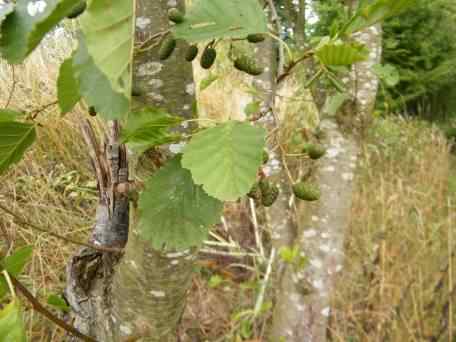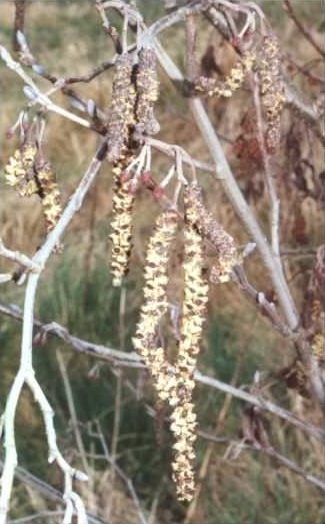
Photo ©2000–
Click any photo for a larger image


Photo ©2000–
Click any photo for a larger image

Alder - Alnus Glutinosa
Family - Betulaceae
Also known as - Black Alder, European Alder
Growing to 20m (66ft) or more quite rapidly for first 30–40 years maturing at about 60, the Alder has a long trunk and narrow crown. Age up to 150 years. Common to most of the UK and Europe growing in moist meadows and river sides being very tolerant of water logged conditions whilst dormant. Typical streamside tree that can form a specific habitat - an Alder Carr. Grows in all soil types except poor acid peat, from seed (red brown flakes) which float and be carried by streams germinating in muddy banks. The alder fixes nitrogen via root nodules and is sometimes used for site reclamation. Botanical description for Glutinosa.
Rounded leaves with shallow teeth appear in April after the flowers, which themselves appear during February to March. Female catkins are oval and mature to brown cone shaped fruits, whilst the male have red scales and are long and pendular. The tree has a slender trunk with fissured dark grey bark, leaves are a smooth rich green with a notched point, the young leaves are sticky. Alder wood is light reddish brown and porous with a course texture, the bark and leaves contain tannin and have astringent properties which has been used in folk medicine to treat chills. It can be turned and has been used in the clog industry, it has been used for making charcoal and was used for gunpowder charcoal. Hardens when immersed in water so is suitable for making piles.
There are many species of Alder with two quite commonly found as introductions - Grey Alder – A. incana that has pointed grey–green leaves and Italian Alder.
Site design ©1999– Brickfields Country Park - Privacy -